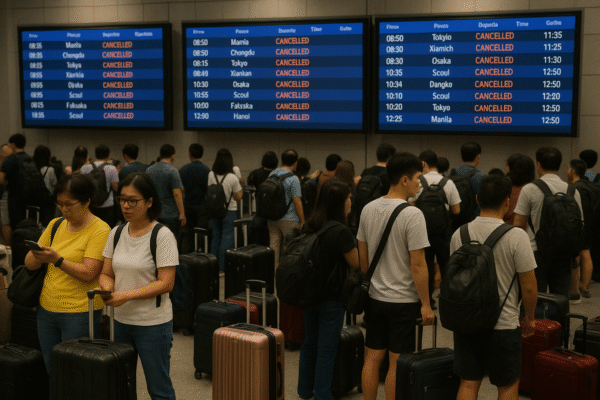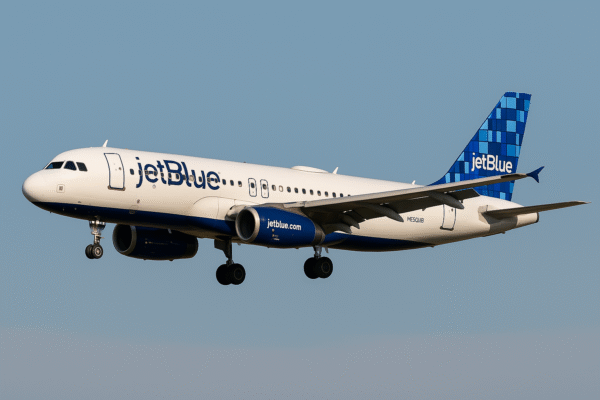JetBlue Airways has reported a narrower-than-expected loss in its second-quarter earnings, buoyed by a strong rebound in U.S. domestic leisure travel and tight cost management measures. The airline’s financial results, which beat Wall Street estimates, point to rising consumer confidence in air travel despite broader economic uncertainties and industry-specific challenges.
According to JetBlue’s earnings release, the airline saw significant demand growth on core leisure routes, with load factors climbing on popular services linking New York, Boston, Florida, and the Caribbean. The carrier attributed its performance to a combination of last-minute bookings, strategic scheduling, and a leaner operating model adjusted to meet post-pandemic travel patterns.
U.S. Domestic Travel Demand Boosts Revenue
JetBlue’s Q2 results highlight a widespread resurgence in leisure travel across the United States. The Transportation Security Administration (TSA) reported screening over 2.5 million passengers on peak travel days throughout July 2025, nearing pre-pandemic traffic levels. Department of Transportation (DOT) and Bureau of Transportation Statistics (BTS) reports echo the trend, showing that U.S. air travel is on a strong recovery trajectory.
JetBlue’s focus on high-volume leisure routes, including New York–Fort Lauderdale, Boston–Orlando, and New York–San Juan, enabled it to benefit directly from this demand rebound. These routes saw the highest seat occupancy levels during Q2, demonstrating the continued appeal of warm-weather and family-friendly destinations.
Cautious Strategy Amid Macroeconomic Uncertainty
Despite the positive momentum, JetBlue has taken a conservative approach to forecasting. The airline withdrew its full-year financial guidance earlier this year, citing economic volatility tied to domestic political shifts and ongoing trade tensions. Executives remain cautious about fuel price fluctuations and consumer behavior in the latter half of 2025.
JetBlue also continues to grapple with challenges tied to Pratt & Whitney engine inspections, which have grounded part of its Airbus fleet. These unplanned maintenance issues have added cost pressures, though the airline’s cost discipline—fueled by flexible staffing and route adjustments—has softened the impact.
Summer Seasonality and Targeted Route Performance
JetBlue’s strategy to concentrate on leisure-dominant markets appears to be paying off. The airline’s network, which includes significant service to Florida, Puerto Rico, and the broader Caribbean, has seen a surge in summer bookings. This aligns with broader TSA checkpoint data that shows consistent traveler volumes through U.S. airports during peak periods.
The carrier’s decision to consolidate capacity into its strongest performing markets has resulted in higher yields per available seat mile (RASM). Meanwhile, JetBlue continues to trim underperforming routes and adjust weekday flight frequencies to optimize aircraft utilization.
TrueBlue Loyalty and East Coast Market Strength
JetBlue’s TrueBlue loyalty program remains a cornerstone of its customer engagement strategy. With expanded point-redemption options, targeted promotions, and family pooling features, the program has experienced increased uptake among leisure travelers, especially those flying during long weekends and school breaks.
As part of its “JetForward” transformation plan, JetBlue is now laser-focused on its core East Coast markets—namely New York, Boston, and Florida—while slowly exiting low-margin routes elsewhere. The result: a more streamlined network with better operational efficiency and a stronger revenue profile.
Competitive Landscape and Fleet Optimization
In contrast to legacy carriers like Delta and United, which have issued more cautious revenue forecasts due to the uneven recovery of business travel, JetBlue has leaned fully into its leisure-focused identity. This strategic clarity has allowed JetBlue to be nimbler in reallocating capacity.
The airline has deferred some Airbus aircraft deliveries and is reviewing future capital expenditures to ensure operational sustainability. Cost-reduction measures across maintenance, fuel planning, and staffing continue to support margin protection.
What This Means for Travelers
For travelers, JetBlue’s disciplined approach means more availability and affordable fares across popular summer and early fall routes. Passengers can expect better reliability, particularly on East Coast and Caribbean flights where the airline has doubled down on frequency and customer service.
With a restructured route network, an emphasis on customer loyalty, and a cautiously optimistic view of leisure travel demand, JetBlue is positioning itself as a resilient choice for budget-conscious fliers and vacationers alike.
Looking Ahead
JetBlue’s modest Q2 success signals more than just a financial recovery—it marks the resurgence of American leisure travel. While broader economic headwinds remain, the airline’s strategic pivot toward high-demand destinations and lean operations offers a blueprint for stability in an unpredictable market.
As JetBlue continues to navigate macroeconomic challenges, its performance this quarter provides reassurance to travelers and investors: flexibility, loyalty incentives, and a clear network strategy can keep airlines competitive—even in uncertain times.
For more travel news like this, keep reading Global Travel Wire



















